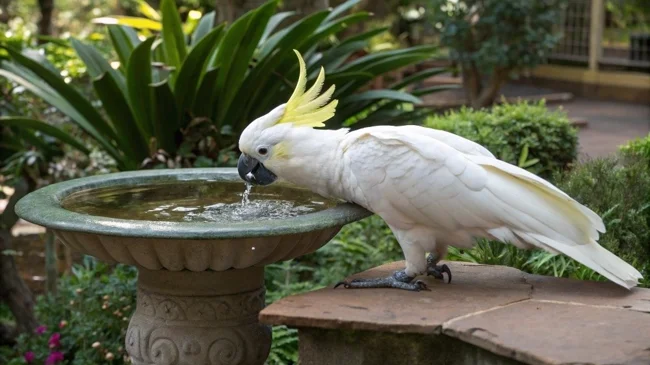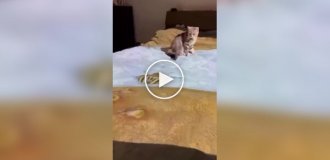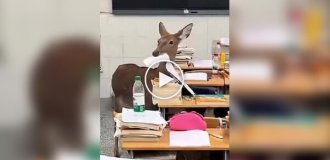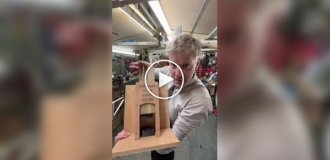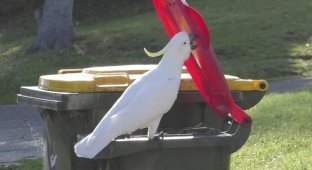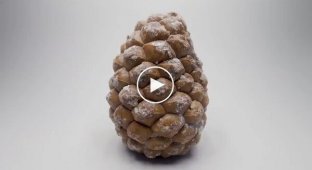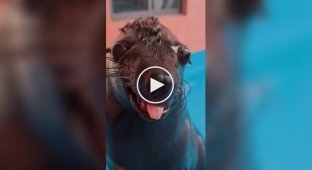Parrots learned to use drinking fountains (5 photos + 1 video)
Cockatoos in Australia have learned to drink from outdoor fountains. A video posted online shows the birds lining up at the fountain and then drinking the water. 
Ornithologists have discovered that greater sulphur-crested cockatoos from three reserves in western Sydney have learned to quench their thirst from outdoor drinking fountains, although it is not easy to do - they need to twist and hold a spring-loaded handle. According to researchers, 41 percent of all attempts by cockatoos to drink from a fountain are successful. Moreover, the skill has spread widely among approximately 70 percent of individuals in the local population, probably due to social learning. The results of the study were published in an article for the journal Biology Letters.
Greater sulphur-crested cockatoos (Cacatua galerita) have successfully populated many Australian cities. Moreover, due to their high intelligence, these parrots have begun to develop new skills that make it easier for them to survive in the vicinity of people. For example, several years ago, a team of ornithologists led by Barbara C. Klump from the Max Planck Institute for Animal Behavior discovered that cockatoos from several cities on the east coast of Australia have learned to open the lids of garbage containers to get to edible waste. And when people try to secure garbage containers from parrots, in particular by placing heavy objects on the lid, the birds come up with ways to bypass this protection. 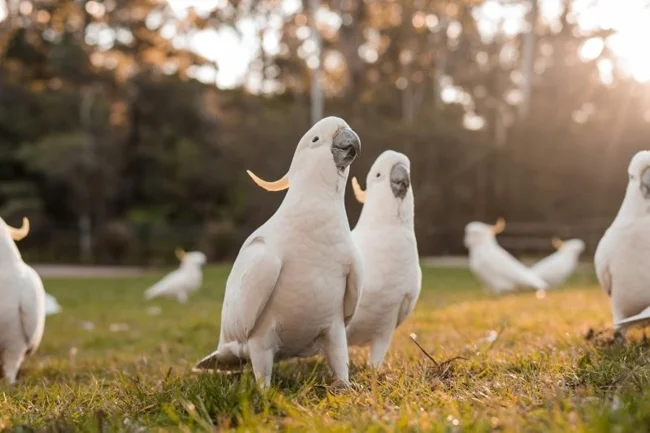
Now, Klump and her colleagues have described another unusual ability of the greater sulphur-crested cockatoo. In September 2018, the researcher conducted observations of these parrots in the western part of Sydney - an area of about 250 hectares, where the Charlie Bali, Karila and Nurraginji reserves are adjacent, which are combinations of native vegetation areas with playgrounds and sports fields. The area is believed to be home to a population of 100-150 greater sulphur-crested cockatoos.
Klump noticed that cockatoos from Western Sydney were quenching their thirst at outdoor public drinking fountains. Each of these structures consists of a concrete stand about a metre high, on which a rubber spout is located; to make water flow from this spout, you need to turn clockwise and hold a spring-loaded handle located 15 centimetres below the top of the structure. Later, rangers from one of the local reserves told the researcher about the cockatoos' habit of drinking from fountains. And in June 2019, Klump and her colleagues confirmed that the birds continue to quench their thirst in this way.
The researchers counted ten fountains with spring-loaded handles for dispensing water in and around the Charlie Bali, Karila and Nurraginji reserves. Cockatoos were using five of them, as indicated by beak marks on the rubber spouts. To study the birds' behavior in more detail, the authors set up two camera traps near one of these fountains. The devices were in operation from late August to October 2019, and captured a total of 3.5 hours of video footage of the parrots (of which 24, or 16-24 percent of the local population, were temporarily marked with colored paint for identification). 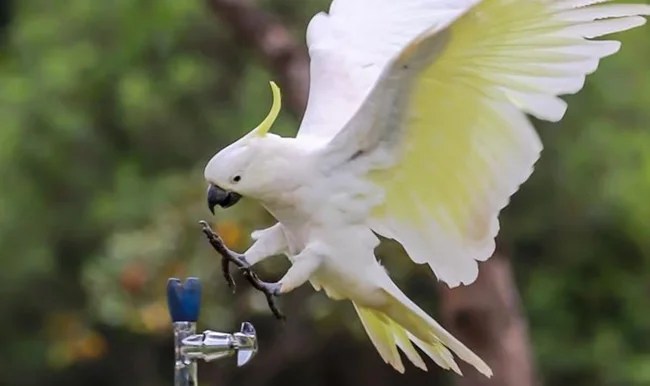
Analysis of the recordings showed that the cockatoos control the water supply using coordinated movements of their hind limbs. First, the bird places one paw, usually the right one, on the water supply handle, while the other holds a rubber spout. In other cases, she places both paws on the handle. After this, the cockatoo transfers all its weight to the handle to turn it clockwise and prevent it from returning to its original position. When water begins to flow from the rubber spout, the parrot turns its head towards it and begins to quench its thirst. According to the authors' observations, the sequence of actions of each cockatoo during manipulations with the fountain is largely individual. At the same time, while one bird quenches its thirst, its relatives wait nearby, forming a queue, sometimes consisting of more than ten individuals.
Over 44 days, 525 attempts by cockatoos to drink from fountains were captured on camera. Of these, 105 were made by 17 tagged individuals. According to the authors' calculations, this means that about 70 percent of all sulphur-crested cockatoos living in the Charlie Bali, Karila, and Nurraginji reserves interacted with the fountains. The percentage of successful attempts to drink from the fountain was 41 percent among all individuals and 52 percent among tagged ones (in other cases, the birds failed to cope with the mechanism; apparently, this task remains difficult for them). This figure was not affected by the sex of the parrots or interference from their peers. However, longer attempts and attempts made in the presence of fewer peers were more likely to be successful. Cockatoos visited the drinking fountains most actively twice a day: at half past seven in the morning and at half past five in the evening. Around the same time, parrots flock to watering holes in the wild. Contrary to the authors' expectations, the maximum air temperature during the day did not correlate with the frequency of visiting fountains. However, in rainy weather, the birds were less willing to visit them (p
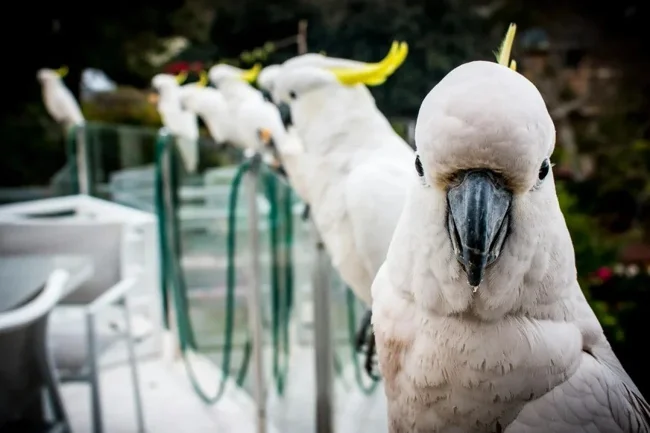
The results of the study indicate that the habit of drinking from fountains has become widespread and ingrained among the greater sulphur-crested cockatoos living in western Sydney, most likely due to social learning (although the individual patterns of manipulation of the mechanism indicate that the birds adopt the general idea from each other and then learn from their own experience by trial and error). This skill was not observed in other areas of the city, probably because there are no fountains of similar design. By comparison, the ability to open bin lids has independently evolved in several locations. Why the cockatoos chose to use fountains to quench their thirst remains unclear. Klump and her colleagues assumed that the birds visited these structures when puddles, streams or flooded tree hollows dry up during hot weather. However, this is unlikely, since the parrots flew to the fountains regularly and not only on hot days. The authors offer several alternative explanations for this behavior: cockatoos like the taste of water from the fountains; it is safer to drink from fountains (they are located in an open area and it is difficult for predators to get to them unnoticed); or the manipulations with the water supply mechanism themselves bring pleasure to the parrots.
